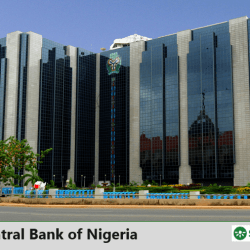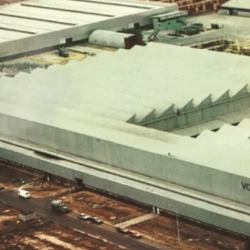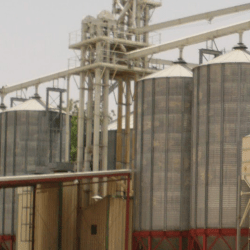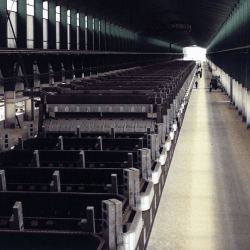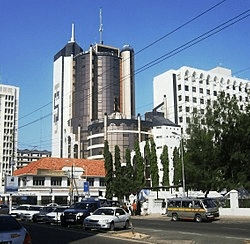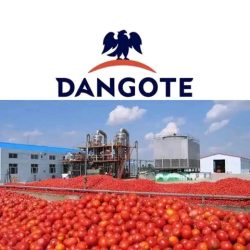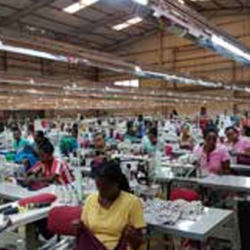
Many industrial policies have been designed and implemented since political independence of Nigeria in 1960. A review of the changing nature of Nigeria’s industrial policies present that Import Substitution Industrialization strategy (ISI) was adopted in Nigeria as far as back as 1960 and persisted till 1985.
This is often described as an inward-looking strategy for industrialisation designed to spur domestic production of manufactured goods for domestic markets. It involves processing of raw materials and setting up of manufacturing fac tories to produce locally certain manufactured goods which were originally imported to save the country from importation of such commodities.
The motives for adopting ISI strategy in Nigeria were to reduce the volume of imports and external dependence, save foreign exchange, create favourable balance of trade and payments, encourage technological development, and create employment.
In addition, a wide range of fiscal, monetary and infrastructural incentives were granted to private sector to reduce business cost.
These incentives include tax holidays, income tax relief, capital allowance and depreciation allowance for investment in equipment, duty exemption on machinery, spare parts, and raw and intermediate materials for manufacturing. In addition,
industrial estates were established and let out to industrialists at subsidized rates, thus relieving them of part of the very heavy capital expenditure on getting their business started.
To provide the much-needed capital to industrialists, the Nigerian Industrial Development Bank (NIDB) was set up in 1963 by the Federal Government of Nigeria in partnership with the International Finance Corporation (IFC) to provide loan to Nigerian incorporated companies in the industrial sector (FGN, 1970). In addition, the Federal Loans Board was also established to provide modest financial aid to industrialists. In pursuit of the ISI objectives, government took steps to pressurize local and foreign investors, especially importers of manufactured goods to set up local plants. With the dramatic increase in the inflow of “oil funds” in the 1970s, government became a major player in the ISI
process by setting up public enterprises.
Heavy industries such as Nitrogenous Fertilizers Projects, Calabar Cement Company, Nkalagu Cement Company, Ikot Ekpene Sunshine Batteries, Nigeria Newsprint Manufacturing Company, Petrochemical Complex, the Kaduna and Warri Refineries, Calabar and Iwopin Pulp and Paper Mills, etc. were established. Government also embarked on large-scale capital-intensive projects such as Ajaokuta Steel Company Limited, Steel Rolling Company at Aladja, Jos, Kaduna and Oshogbo, and Auto-assembly Plants at Kaduna, among others.
Contrary to the success story of ISI strategy in other countries and the high expectations of its performance in Nigeria, its performance in Nigeria was unsatisfactory. There are arguments that ISI in Nigeria failed to lead to desirable level of industrial growth and technological development. With escalating import bills, mounting external debt obligations and less foreign exchange to settle them following ‘oil glut’ in the international market, it became obvious that ISI strategy had failed in Nigeria and needed to be discontinued. Eventually, there was a shift in Nigeria’s industrial policy thrust from ISI a p p r o a c h t o E x p o r t P r o m o t i o n Industrialization (EPI).
It was government’s deliberate effort to expand the volume of Nigeria’s exports through export incentives and other mechanisms in order to generate more foreign exchange and improve the balance of payment.
The export-oriented industrial policy was meant to achieve a broad objective of a c ce l e r a ting t he pa ce of indus tri a l development in Nigeria. Embedded in this industrial policy package were SAP-induced industrial policies like new export promotion decree of 1986, interest rate deregulation policy, the privatization and commercialization policy of 1988, the new export promotion policy/incentives, the new industrial policy of Nigeria of 1989 and debt conversion (equity swap) policy. With the new export promotion law, export license requirements for exportation of manufactured goods were abolished, export credit guarantee and insurance schemes were introduced, commodity boards were scrapped to allow the market forces to be more active and export free zones were established at several locations in the country.
The hitherto regulated interest rate in the country was deregulated to stimulate foreign capital inflow, encourage Nigerians to repatriate capital, induce saving and restrain credit expansion.
Discount rate was raised from 11% to 14% in 1987 with minimum lending rate fixed at 14%. New export policy/incentives permitted Nigerian exporters of non-oil (industrial) products to retain for use 100% of their export proceeds in foreign currency instead of 25% permitted before the introduction of new export policy.
Privatization and commercialization policy, aimed at reducing the dominance of unproductive investment in the public sector was implemented, public sector down-sizing and increased private sector participation in the economy, led to the setting up of the Technical C o m m i t t e e o n P r i v a t i z a t i o n a n d
Commercialization (TCPC).
Many public enterprises like Flour Mills of Nigeria Limited, African Petroleum Limited, National Oil and Chemical Company, Aba Textile Mills, United Nigerian Insurance Company, Northern Breweries among others were privatized.
However, one of the observable facts about the privatized public enterprises is that because of the impropriety associated with it, some of them are yet to resume full production after many years of privatization. By all indications export promotion has not made much impact in Nigeria’s industrial sector and seems not to yield the expected benefits. While it reduced the size of public sector investment in the economy, increased private sector participation in the industrial sector and provided more access to foreign market, the adverse effects of devaluation, high interest rate and tight monetary policy which prevailed during the period increased the cost of production and reduced the profit margin of the firms, especially the Small and Medium Enterprises (SME). Moreover, like the ISI strategy, the EPI approach also depended largely on foreign technologies and inputs. Its failure provided an inroad for Foreign Private Investment-led industrialization (FPI) in Nigeria’s industrial policy discourse as another industrialization strategy.
The Foreign Private Investment (FPI) is a direct investment into production or business in a country by an individual or company in another country, either by buying a company in the target country or by expanding operations of an existing business in that country. In a narrow sense it involves building new facilities. Broadly speaking, it includes building new facilities, mergers and acquisitions, reinvesting profits earned from overseas operations and intra company loan (Wikipedia, 2013). In pursuing FPI objectives, Nigeria exerted effort to guard against the twin monsters of decaying infrastructures and corruption, which scared away many potential foreign investors from Nigeria. Attempts were made to break the bureaucratic bottlenecks w h i c h i n h i b i t e d r e g i s t r a t i o n a n d establishment of foreign businesses in Nigeria through the abolition of Land Use Act and the Nigerian Enterprise Promotion Decree.
The One-Stop investment Centre (OSIC) was established by the Nigerian Investment Promotion Commission (NIPC) to hasten the processing of application for entry into Nigeria by prospective foreign investors, and registration and establishment of businesses.
To sanitize and stabilize the financial system, banking sector reforms including the universal b a n k i n g o f 2 0 0 2 a n d th e b a n k i n g consolidation exercise of 2005 were carried out. Other measures adopted include evolution and implementation of the s strategic c management of industrial development through an industrial master plan since 1999.
As provided for in the plan, State Owned Enterprises (SOEs) had been reviewed with the aim of completing or rehabilitating viable ones and eventually privatising them. The master plan provided for strengthening industrial research and commercializing research findings as well as sourcing for technical assistance for industrialists in the area of technology transfer and capacity building. In addition, the Small and Medium Enterprises Development Agency of Nigeria (SMEDAN), an umbrella agency for small and medium enterprises (SMES) was established to cater for the development of SMEs. Many other policy and strategies introduced by Nigerian government are embedded in the New Partnership for Africa’s Development (NEPAD), National Economic Empowerment and Development Strategy (NEEDS), the Seven Point Agenda in 2007, Vision 20: 2020, and the Transformation Agenda of 2012.
Other policy initiatives of the Federal Government for growing the Nigerian economy are the Nigerian Industrial Revolution Plan (NIRP) of 2014, NationalEnterprise Development Programme of 2014, the Economic Recovery and Growth Plan ( ER G P) o f 2 0 1 7 , a n d t h e N a ti o n a l Development Plan of 2021. Although the rate of net inflow of foreign private investment into the country has increased, the insecurity threat in the country posed by Boko Haram insurgency, political violence, ethnic militia and wide spread flood have constrained the success of these policies and strategies in Nigeria. The performance of manufacturing sector is weak as indicated by dwindling level of capacity utilization. The profit margin of firms is low due to high cost of production caused by shortage of critical infrastructure like electricity, transportation, etc. and the fact that machinery, spare parts, raw materials and technology are imported
Reference
https://kebbistate.gov.ng/sites/default/files/KEBBI%20STATE%20INDUSTRIAL%20POLICY_0.pdf
